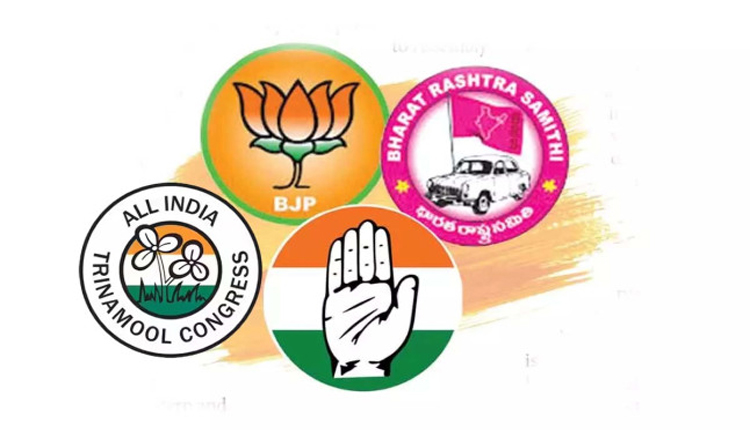New Delhi: As part of a comprehensive investigation into the financing of politics, the Association for Democratic Reforms (ADR) has unveiled the 40 wealthiest regional Indian political parties, with a total of over ₹ 2,532.09 crore for the year 2023–24 alone.
A report, which is essentially an audit of the monetary power of these parties, draws attention to the prevalent influence of electoral bonds, where more than 70% of these parties’ money came from, thus highlighting a system that leans on financial strength to achieve political goals. This growth in income, which would be 45.77% higher compared to ₹1,736.85 crore in 2022-23, reflects the magnitude of the financial stakes in Indian politics.
The leader of the echelons of power, Bharat Rashtra Samithi (BRS), declared a total income of ₹685.51 crore, while Trinamool Congress (TMC) followed up with ₹646.39 crore. Biju Janata Dal (BJD) fetched ₹297.81 crore, Telugu Desam Party (TDP) ₹285.07 crore, and YSR Congress ₹191.04 crore. These were the top five parties, with a combined total of 83.17% of the overall income.
ADR’s report found that ₹1,796.02 crore, 70.93% of the total, were the funds facilitated by electoral bonds, and that only ten parties, including BRS, TMC, BJD, TDP, and DMK, had access to this controversial mode of funding. The voluntary contributions accounted for ₹321.82 crore, and ₹274.90 crore was recorded as interest income.
The report reveals considerable differences in fiscal discipline. Twenty-seven parties, including BRS (₹430.60 crore unspent), TMC (₹414.92 crore), and BJD (₹253.79 crore), declared excess funds. At the same time, 12 parties, such as YSR Congress, DMK, Samajwadi Party, and Janata Dal (United), declared a higher expenditure than the total income, with the YSR Congress exceeding by as much as 55%. Interestingly, the Goa Forward Party, although having been reported to have had zero income, still managed to spend ₹1.56 lakh, something that might cause suspicion of financial transparency. The ADR is pointing out the problematic situation where many parties delay in submitting the audit reports, with 20 party reports not published on the Election Commission’s website even, 313 days past the deadline, and some being late by 12 to 216 days.
According to the data from the State Bank of India, the electoral bonds, which were cashed for an amount of ₹ 4507.56 crores, saw 55.99% (₹ 2524.14 crores) of the money going to national parties like BJP, Congress, and AAP, etc., whereas the regional parties could only take 39.84%. The report’s conclusions open up considerations about the lack of clarity in the financing of politics and its influence on the fairness of democracy; for instance, TMC is the highest benefactor of this opaque method, as its income shot up by ₹ 312.93 crores. With the anticipation of the next elections getting tougher day by day, the ADR revelations are pointing out the urgent requirement of transparency in the financial veins of power in India’s political landscape.



Comments are closed.